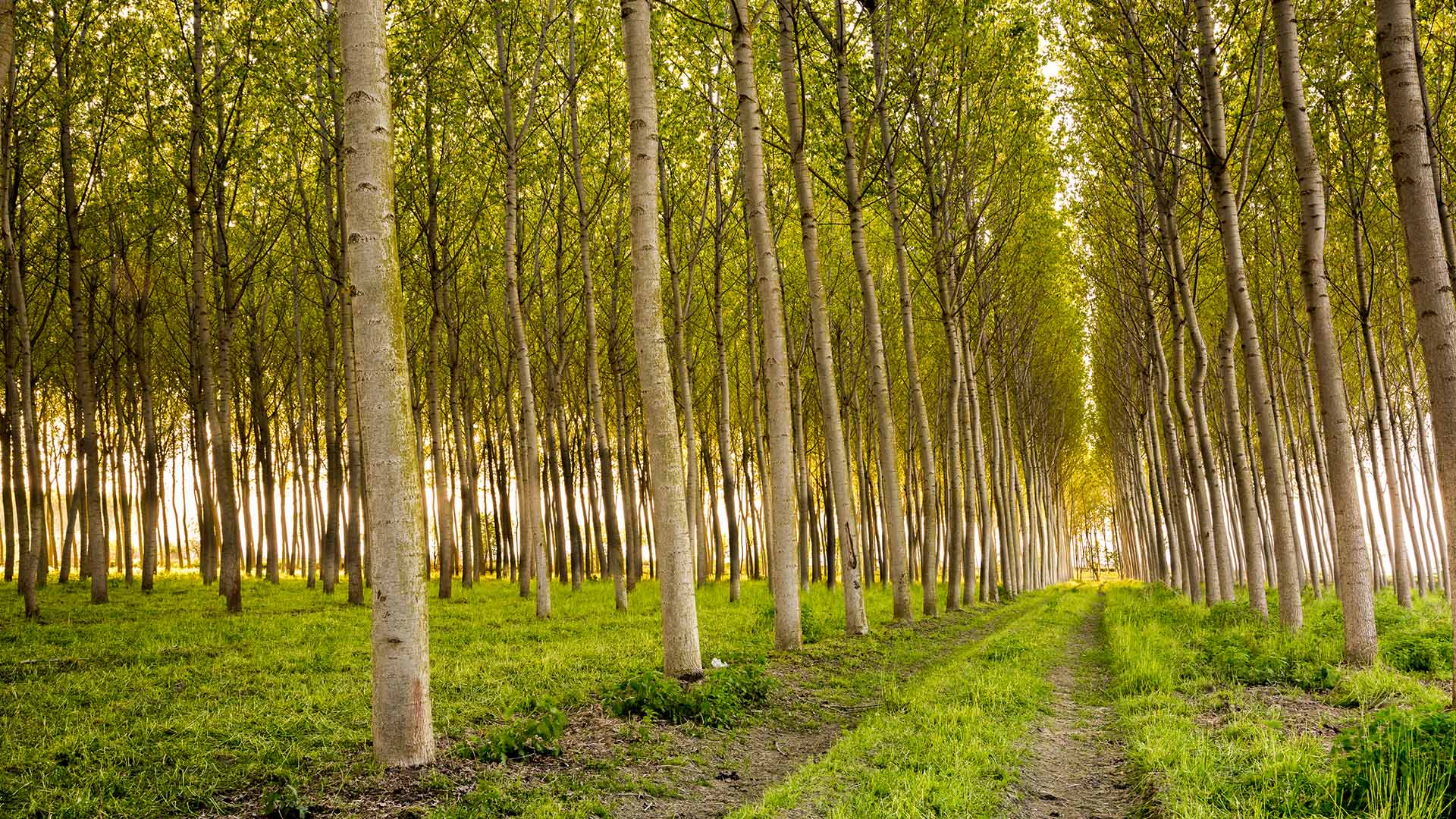Poplar trees are a common sight across much of North America. With their distinctive leaves trembling in the breeze poplars provide great shade and beauty to landscapes. However, poplars are relatively short-lived compared to other trees like oaks or maples. So how long does a poplar tree live?
The lifespan of a poplar tree depends on the species, growing conditions, and proper care. With the right location and maintenance, poplars generally live around 50 years. Some types may only reach 15-20 years while others can survive over 150 years. Let’s take a closer look at poplar tree lifespans and care.
Poplar Tree Species and Their Typical Lifespans
There are around 35 different poplar species, along with many hybrids. The most common varieties planted in home landscapes include:
-
Eastern Cottonwood: Also called eastern poplar, this native North American tree lives around 20 years on average.
-
Hybrid Poplars: Crosses between native and exotic poplars, hybrids are commonly sold at garden centers. With proper care, they can survive 50 years or longer.
-
Lombardy Poplar Known for its tall narrow form, Lombardy poplars live a short 15 years or so.
-
Tulip Poplar: Despite the name, tulip poplars are actually in the magnolia family. These massive trees can reach 400 years old in ideal conditions.
-
Balsam Poplar: A long-lived poplar species, balsam poplars may survive 100-150 years.
-
Quaking Aspen: Named for their trembling leaves, aspens typically only reach around 150 years. Some exceptionally old specimens have been documented at 200+ years.
As you can see, poplar lifespans run the gamut from just 15-20 years to over 400 years for ancient tulip poplars. Next, let’s go over some tips to maximize poplar tree longevity.
Caring for Poplar Trees: 5 Tips for a Long Life
Poplars grow best in moist, fertile soil and full sun Here are some top care tips to help your poplar tree thrive
-
Plant in Full Sun: Poplars need at least 6 hours of direct sunlight per day. Insufficient light leads to sparse growth and reduced lifespan.
-
Provide Even Moisture: Poplars require consistently damp soil. Allow the soil to dry slightly between waterings, then soak thoroughly.
-
Fertilize Annually: Apply a balanced fertilizer each spring to nurture poplar growth. Organic compost also feeds the soil food web.
-
Prune Dead Wood: Regularly remove any dead, diseased, or damaged branches to maintain tree health.
-
Allow Ample Space: Poplars can grow quite large. Make sure to give them enough room to reach mature size.
With proper care, poplar trees typically have a lifespan of around fifty years. Avoid planting poplars too close to buildings, as their invasive roots can damage foundations.
Now let’s explore factors that may shorten or extend your poplar’s longevity.
What Affects Poplar Tree Longevity?
Many elements influence how long a poplar tree will live:
Species and Variety: Some poplar species are inherently short-lived, like Lombardy poplars at just 15 years. Select longer-lived varieties like hybrid poplars for a tree that will thrive for decades.
Growing Conditions: Poplars prefer moist, fertile soil and abundant sunlight. Suboptimal sites lead to reduced vigor and lifespan.
Pruning and Care: Regular pruning, watering, and fertilization supports poplar health. Neglected trees succumb more readily to diseases and pests.
Environmental Stresses: Pollution, drought, extreme weather, and compacted soil tax a poplar’s resilience. Minimize stress for maximum longevity.
Pests and Diseases: Bacterial cankers, leaf rusts, and bronze poplar beetles weaken poplars. Address issues promptly to avoid decline.
Age: Poplars eventually succumb to old age, with branches dying back and the canopy thinning. Expect your tree to naturally decline around 50 years old.
With attentive care in a suitable site, you can expect around half a century of beauty and shade from a hybrid poplar or other favored variety. Some key indicators your aging poplar is nearing the end of its lifespan include dying upper branches, fungal growths on the bark, and reduced leaf canopy density.
Interesting Facts About Ancient Poplar Trees
While most poplars live fast and die young, some specimans have persevered for centuries and earned recognition for their remarkable longevity. Here are a few noteworthy ancient poplars:
-
A tulip poplar in Great Smoky Mountains National Park is over 500 years old and still going strong.
-
Italy’s Cà Rezzonico poplar is estimated at 450-650 years old. This revered giant has a trunk over 6 feet wide!
-
Methuselah is a bristlecone pine in California’s White Mountains that is dated to be almost 5,000 years old – the oldest known non-clonal organism on Earth!
-
Pando, a massive quaking aspen clone in Utah, has been growing for at least 80,000 years, making it one of the oldest living organisms.
While poplars generally only survive a century or two, these ancient specimens demonstrate the enduring longevity some trees can attain under ideal conditions.
When to Replace a Poplar Tree
Poplars tend to show signs of decline around the 50 year mark. If your aging poplar displays poor leaf production, bare upper branches, or fungal growth, it may be time to remove and replace it before it becomes a safety hazard. Plan ahead by planting a new poplar nearby so it has time to establish before the old tree needs removal.
To extend your poplar’s lifespan, provide supplemental water during dry periods and prune back any dead branches. However, large scale limb dieback or fungal cankers indicate the tree is beyond saving. Remove declining poplars promptly before they can endanger people or property.
Saying Goodbye to a Beloved Poplar Tree
Like all living things, poplar trees eventually pass their prime. But you can take steps to commemorate a beloved poplar when its time comes:
-
Take photos of the poplar during its glory days to remember it by.
-
Salvage interesting bark slices or limbs as mementos before removal.
-
Plant a new poplar in the same spot to carry on the legacy.
-
Hold a farewell ceremony or make a dedication plaque for the tree.
Though poplars’ lives are relatively brief, they make a strong impression with their grandeur. With attentive care, you can enjoy their stately presence for generations to come.
Poplar trees hold a special place in many backyards and landscapes. But their accelerated growth comes at a cost in lifespan, with most types living under 50 years. Providing attentive care, ample space, and ideal growing conditions can maximize your poplar’s longevity. Though individual trees inevitably decline, take steps to commemorate your poplar so its memory lives on. With some planning and care, poplars will continue gracing our landscapes for years to come.
Poplar – Species requirements
Poplars are suited to high exposure to sunlight. They thrive in rich, cold, and wet soil. White poplars do well in wet and dry areas, as well as in areas that are flooded. They can even grow in poor, calcareous soils. Grey poplars can put up with dry soil, even seaspray. All poplar trees cope well with air pollution. There is a big difference between this planting method and the ones used for oak or Douglas fir. These examples are planted with shovels or pickaxes, using rooted saplings. For poplars, on the other hand, you plant them from cuttings. Cuttings are 3–4 m long branches that are planted with crowbars. This is also done in the fall, when the plant is resting, instead of the spring, when planting is harder because the cutting needs water.
Poplar is a versatile wood, making it useful material in a range of various outlets. It is a softwood thats easy to shape. It makes a white wood with very little wood grain that is popular for use inside because it comes in matte or satin finishes. Poplar wood also has excellent mechanical resistance. Along with more traditional uses, this useful wood has led to the start of new methods of sustainable development that combine the wood’s natural qualities with advances in technology.
Poplar – Overview Poplar trees (

How Long Do Hybrid Poplar Trees Live?
FAQ
Why are my poplar trees dying?
Are poplar trees likely to fall?
Do poplar trees have deep roots?
- The Ultimate Guide to Growing Strawberries in Raised Beds - August 8, 2025
- No-Dig Garden Beds: The Easiest Way to Grow a Beautiful Garden - August 6, 2025
- How to Protect and Preserve Wood for Raised Garden Beds - August 6, 2025

